The Dell Venue 11 Pro 7000 Review
by Brett Howse on April 16, 2015 8:00 AM EST- Posted in
- Tablets
- Dell
- Windows 8.1
- Core M
Tablet Performance
So far we have compared the Venue 11 Pro with its Windows PC based brethren. And that is a fair comparison to make, since the Venue 11 Pro is offered with accessories to transform it into exactly that. But to complete the picture we should take a look at how it performs as a pure tablet.
We do not have all of the same benchmarks available on Windows as we do on iOS and Android, but we will make what comparisons we can to get a general feel for how this tablet compares against competing devices.
Web Performance
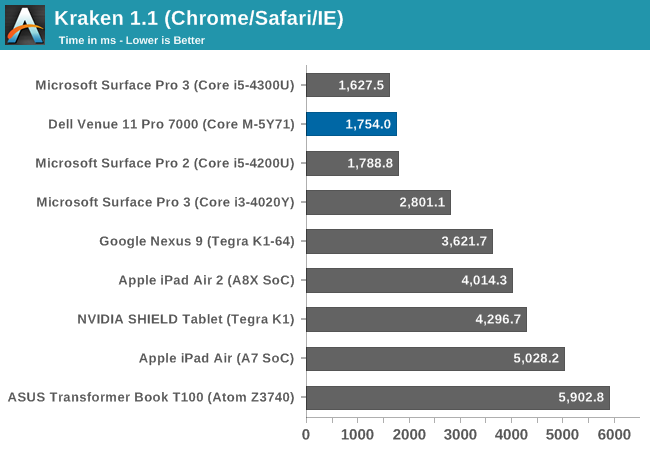
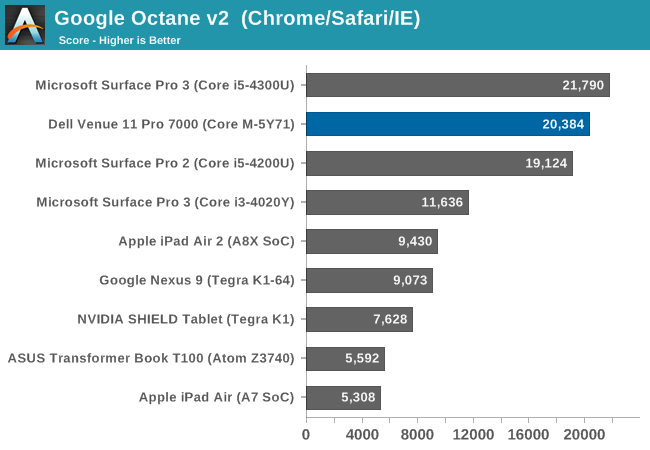

Core M offers a lot more performance than any of the ARM based tablets when it comes to CPU bound tasks. It is easily double the performance of the best ARM or Atom based devices. It is a pretty great achievement when you look at how far back Intel was in the mobile game a few years ago. Atom got them to somewhat competitive performance and TDP, but Core M has pushed them well past. Of course that is ignoring the huge price differential, with the Core M CPU having a tray price of more than many Android tablets, as well as the larger circuit board that Core M requires. Intel still has Atom, and for good reason. They can and do price Core M at a premium, but have Atom to provide the less expensive option.
3DMark Unlimited
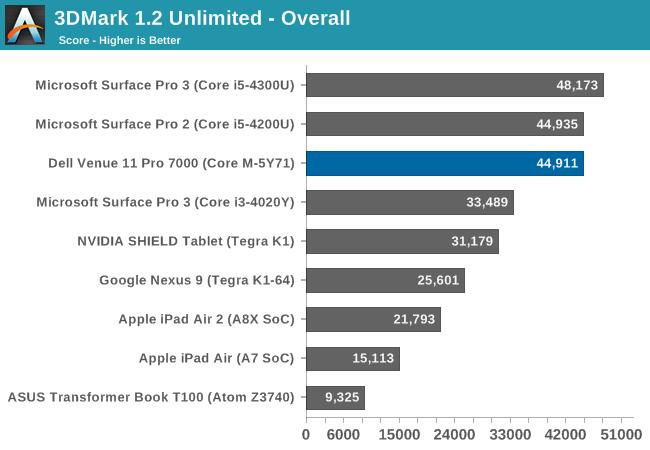
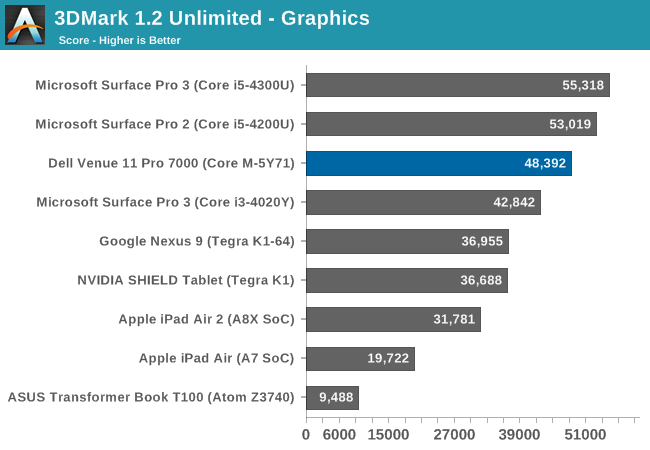
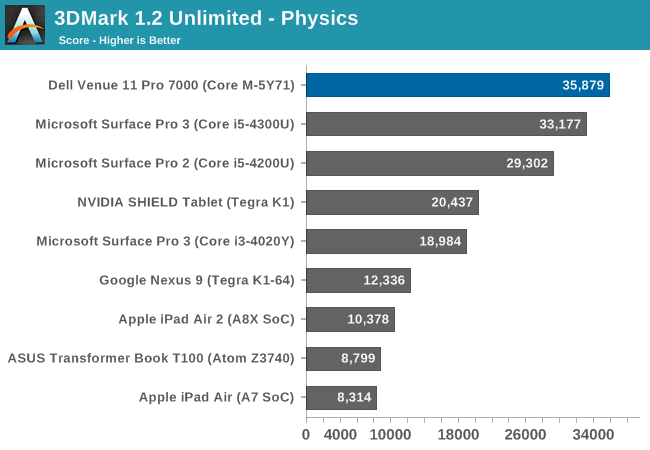
Ice Storm Unlimited is rendered off-screen, so that it can be used to compare across devices and platforms. As we have seen in the PC comparison, the Venue 11 Pro can perform quite well if given such a short benchmark. This does show to capabilities of the GPU inside, but unfortunately it is more limited in performance when doing longer workloads.
GFXBench
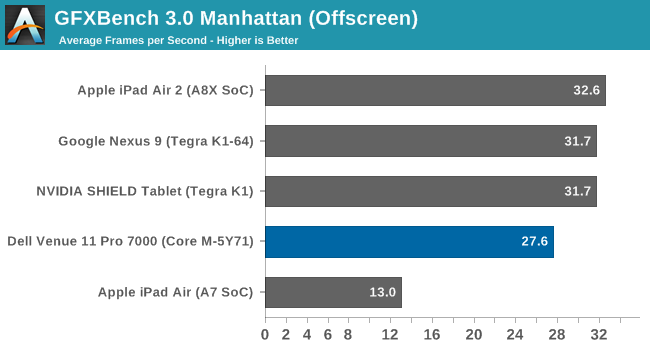
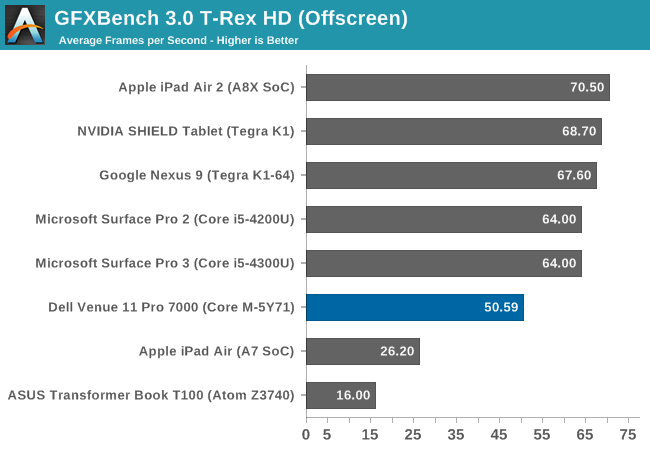
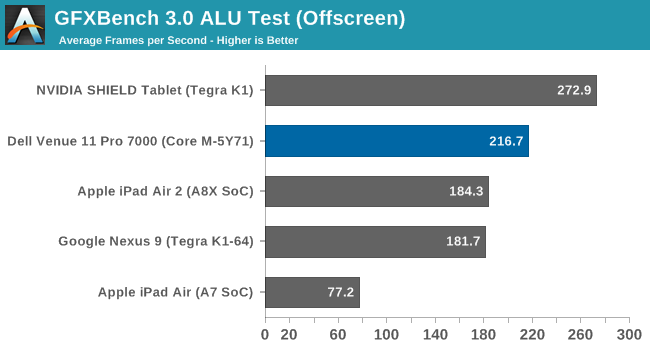
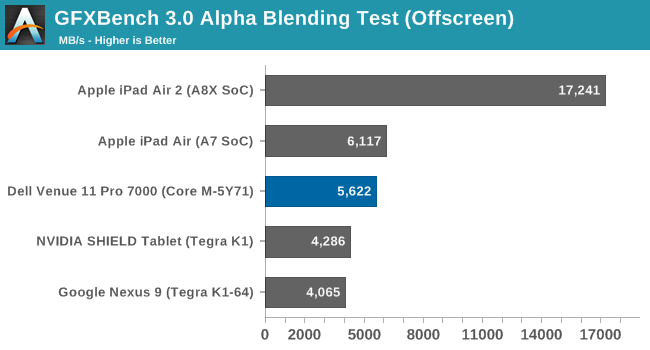
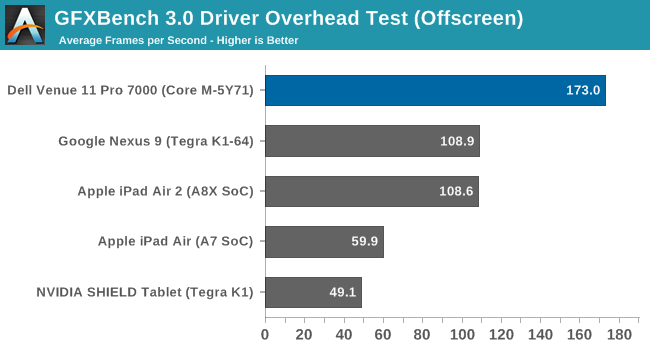
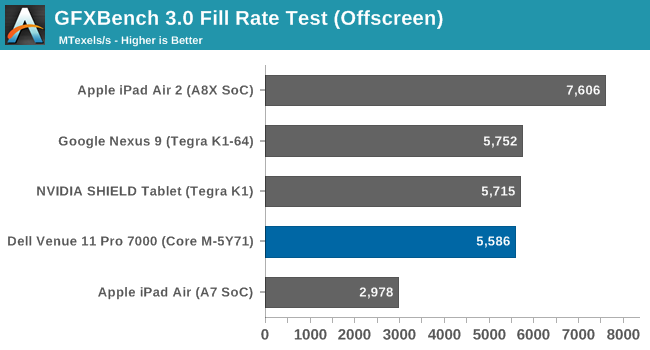
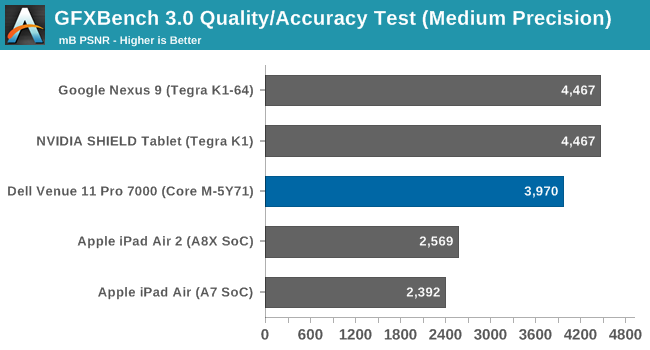
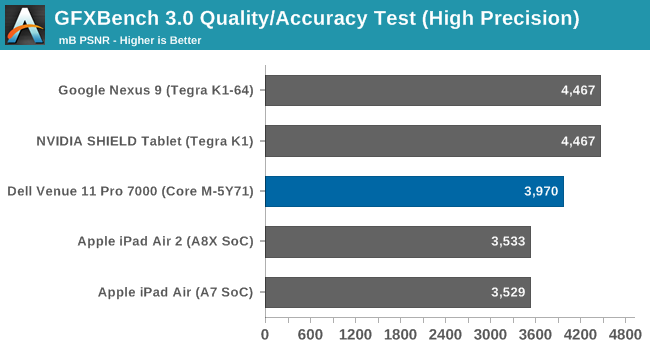
On the CPU side, Core M dominates the ARM competition, but on the GPU front it is not the same story. As we saw in 3DMark, the GPU can perform very well, but on a test like this where sustained performance is required, the performance does drop off quite a bit. The GPU is not terrible, but it cannot compete with the top GPUs available in a tablet today. Perhaps that will change with Skylake. At the moment, it is only ok.
NAND Performance
The Venue 11 Pro has an older model of SSD, but it is still a SSD, where as most tablets are outfitted with some form of eMMC storage.

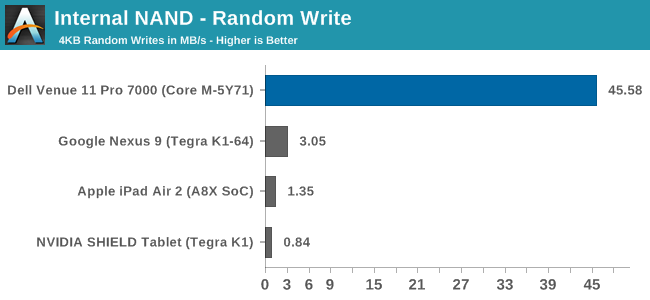
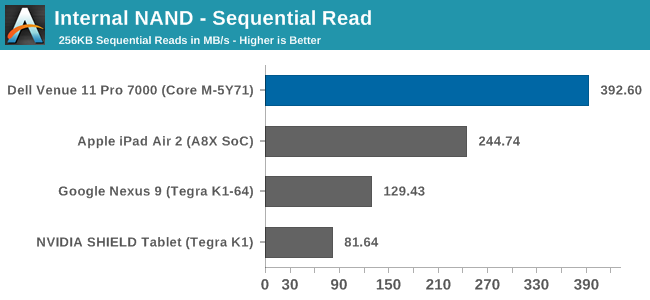
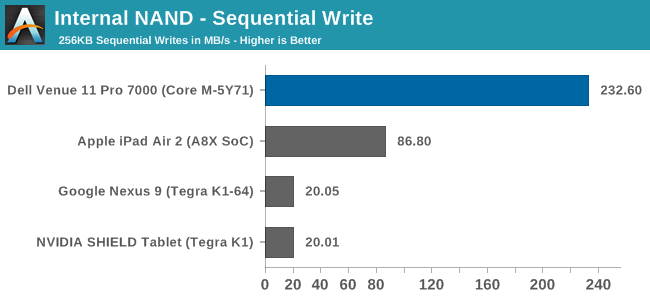
Building a tablet out of PC components still has its upsides, and storage performance is one of them. There is still quite a gap between a true SSD and eMMC storage. The Venue 11 Pro has the SanDisk X110 SSD, which is an older model drive, yet performance is still a good bit better than the average tablet.
Tablet Performance Summary
The Venue 11 Pro, with Windows 8.1, a Core M CPU, and a SSD, has very competetive performance compared to the standard tablets of today. There are certainly advantages to a true tablet, such as weight and thickness, but as far as performance, the Venue 11 Pro outclasses these devices in everything except GPU performance. The GPU performance is still good, but it is not class leading.










92 Comments
View All Comments
MrSpadge - Thursday, April 16, 2015 - link
Well Said! I'm not going to buy Core M because I value performance over mobility - yet this doesn't make it a bad product. If you want maximum performance at high mobility, nothing comes close to Core M.dj_aris - Thursday, April 16, 2015 - link
Core M is in fact a new cpu category on it's own, a cpu that resembles the single core performance of "core" cpus while in the Atoms' TDP envelope (at least before it throttles!). But, as with every new product, it's overpriced at launch. Wait for the Skylake release, I say.lilmoe - Thursday, April 16, 2015 - link
That's the main point. It's REALLY overpriced.xthetenth - Thursday, April 16, 2015 - link
Pay a pretty high price for the absolute best burst performance for a snappy device. I've heard much worse than that.smilingcrow - Thursday, April 16, 2015 - link
The M-5Y71 is the same price as the i5-4300U in my laptop with the same base & turbo boost clocks for the CPU. Given the same cooling as my laptop has it should perform very similarly for CPU loads. Not fussed about GPU loads so haven't focussed on that but seemingly it will struggle to match the U series when both are stressed.Marc GP - Thursday, April 16, 2015 - link
A category where they can only keep this performance for short bursts before having to low their frequency from 2,8Ghz (turbo) to their nominal 1Ghz (where you don't get any much performance than on a simple Atom).ppi - Thursday, April 16, 2015 - link
Even in the benchmarks, where sustained performance is necessary, Core-M is some 25% slower compared to 15W Broadwell. ONLY.This effectively means, that if task is pain on Core-M, it will be pain on 15W Broadwell as well. I.e. if some task is not snappy and requires waiting on Core-M, it requires waiting on Broadwell as well. And only desktop class chips may have the oomph to be significantly faster.
I do not count in games, but nobody considers Broadwell-U gaming SoC either.
smilingcrow - Thursday, April 16, 2015 - link
If you had read the recent detailed Anandtech overview of Core M you would see that is a fallacy. I was surprised how well Core M does in a fanless laptop versus one with a Broadwell i5 that is fan cooled. And even more how well it does in a tablet where surface temperate is more of an issue so throttling is more prevalent.A Core M-5Y71 in my Latitude E7440 with a slightly beefier cooler would I imagine come close to my i5-4300U even for extended loads. This is purely for CPU loads as the GPU is another issue that doesn’t concern me.
MrSpadge - Thursday, April 16, 2015 - link
When it throttles it's actually entering Atoms TDP envelope. Before that it's allowed to use more power for short periods. That's the whole point of a Thermal Design Power.zepi - Thursday, April 16, 2015 - link
If you don't care about absolute performance, Intel is happy to sell you a Baytrail for quite a bit cheaper.If you do... Well, no one else can match Core M's CPU-performance even remotely.